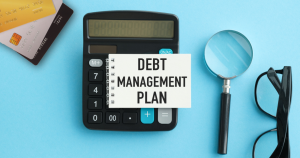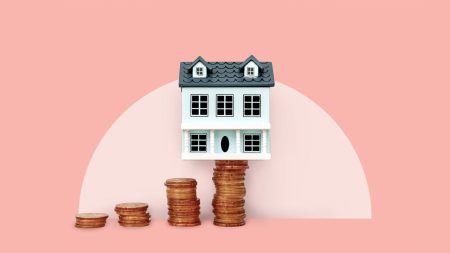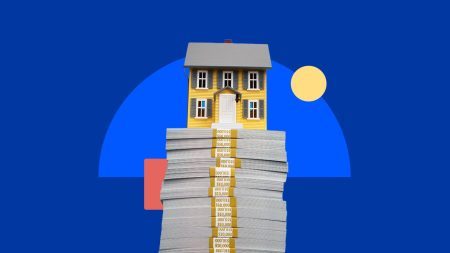Key takeaways
- Alternatives to personal loans include credit cards, home equity loans and buy now, pay later plans.
- Each alternative has benefits and drawbacks to consider.
- The right alternative depends on how much money you need, how quickly you need it and how flexible you need the terms to be.
If you’ve checked out the pros and cons of personal loans and they don’t meet your needs, you should investigate personal loan alternatives. A credit card, home equity line of credit (HELOC) or personal line of credit might make more sense for funds you don’t need right away or projects that don’t have a final cost. If you don’t have enough cash to make a purchase but don’t want a multi-year loan, a buy now, pay later plan may be a good option.
We’ve gathered 10 alternatives to personal loans that may be a better match for your budget, spending plans or payment flexibility needs.
10 alternatives to personal loans
| Personal loan alternative | When it’s a better choice than a personal loan |
|---|---|
| Credit card | You don’t need all your funds immediately. You prefer the flexibility of minimum payments. You want to be able to reuse the funds as needed. |
| Home equity loan | You own a home with substantial home equity. You prefer a fixed, stable payment. You need a longer repayment term. |
| Home equity line of credit | You don’t want to use credit cards. You own a home with substantial home equity. You don’t want all the credit at once. You have ongoing projects that require reusable funds. |
| Cash-out refinance | You can’t qualify for a good personal loan rate. Your credit scores are too low for home equity financing. You can snag a lower mortgage rate than you’re currently paying. You own a home with substantial home equity. |
| Personal line of credit | You don’t need all the funds now. You don’t mind a variable rate. You have good to excellent credit. |
| Buy now, pay later plan | You want to spread out the payment for a purchase. You want to avoid interest charges. You’ll have the cash to pay the balance off within the plan period. |
| 0% intro card | You have excellent credit and qualify for a promotional rate. You want to pay off credit cards. You can pay off the balance before the introductory period ends. |
| Peer-to-peer (P2P) lending | You want more options than one lender can offer. You’ve been turned down by other personal loan companies. |
| Cash advance apps | You have a regular paycheck. You need a small amount and want to avoid payday loans. |
| Retirement loans | You’re eligible for loans against your retirement plan. You’re not planning to retire or switch jobs soon. |
1. Credit cards
Who it’s better for
A credit card is a good alternative to personal loans for covering ongoing expenses, as long as you don’t max out your available credit. It’s also beneficial if your income is unpredictable or seasonal, since you can make minimum payments.
People often choose credit cards over personal loans because of the payment flexibility they offer. You can use as much or as little of your available credit as you want, versus getting all your funds at once with a personal loan. The entire balance can be paid off and reused as you wish.
The monthly payment on a credit card works differently from a personal loan payment. A credit card minimum payment is only based on the amount of credit used. That may be easier on your budget than a fixed personal loan installment payment, especially if you have variable income from tips or commissions. Credit cards can also come with cash back or travel rewards and perks you won’t get with personal loans.
Bankrate tip
It’s best to pay your balance in full each month to keep your credit scores from dropping. Unlike a personal loan, your credit card balance directly affects your credit utilization ratio. The more available credit you use, the more your credit scores could drop. Credit interest rates are also variable, compounding and typically much higher than personal loan rates.
2. Home equity loan
Who it’s better for
In many ways, a home equity loan is similar to a personal loan. You receive all the money at once and make fixed-rate payments for the life of the loan. The key difference is that home equity loans are secured by your home, and the lender can foreclose if you default.
Home equity loan rates are traditionally lower than personal loans. However, excellent credit personal loan rates are worth exploring for borrowers with high credit scores as they have dropped to single-digit levels that often rival home equity loan rates.
Home equity loan terms can be as long as 30 years, giving you a much lower monthly payment than the seven-year maximum term you typically find with personal loans. There are even tax benefits if the funds are used exclusively for home improvements.
Lenders limit how much equity you can borrow based on your home’s value and your credit score — you’ll need at least a fair or good credit score to qualify. It may take weeks to get approved and receive home equity loan funds, compared to a day or two to get personal loan funds.
3. Home equity line of credit (HELOC)
Who it’s better for
Home equity lines of credit may be a better alternative to personal loans if you don’t want the entire sum at once and have a large amount of equity in your home.
Like a home equity loan, a HELOC is secured by your home. The credit line amount is based on your home’s value and your credit score. However, it works more like a credit card, allowing you to use as much or as little credit as needed.
Your payment is based on the amount you’ve drawn and can be paid off and used again during the “draw period,” which may last 10 to 15 years. Some HELOCs only require interest payments during the draw period, which can be beneficial for managing cash flow in fix-and-flip businesses or other self-employed side hustles.
After the draw period, your balance is treated as an installment loan, with regular payments until it is paid off. You may be able to deduct HELOC interest on funds used for home renovations and borrow more than the $100,000 cap usually set by personal loan lenders. But there may be ongoing and one-time costs. Plus, defaulting puts you at risk of losing your home.
4. Cash-out mortgage refinance
Who it’s better for
Homeowners with significant equity in their homes may be able to borrow more than they currently owe and pocket the difference with a cash-out refinance. Some programs, like the FHA cash-out refinance, allow borrowers to qualify with scores below 580 and spread the payments over a 30-year term.
The mortgage process may take 30 to 45 days to complete and requires more in-depth financial paperwork than the required personal loan documentation. Replacing your current mortgage may not make sense if your current rate is very low. Plus, you risk losing your home in foreclosure if you can’t make payments.
Bankrate tip
Despite three Fed rate cuts at the end of 2024, mortgage rates have remained stubbornly high. However, some lenders are offering personal loan rates below 7 percent, making them a viable alternative to borrowing against your home’s equity.
5. Personal lines of credit
Who it’s better for
Borrowers who don’t own or want to borrow against their homes and want the convenience of using and repaying credit for ongoing expenses may benefit from a personal line of credit.
If you don’t need all your funds now or don’t know how much to borrow, a personal line of credit may be a good alternative to a personal loan. Like credit cards, personal lines of credit are unsecured and revolving, so you can borrow what you need as you need it. However, the rates on personal lines of credit are usually lower than credit cards, but are often higher than personal loan rates and are variable (not fixed).
This type of credit is often suitable for expenses like ongoing home improvement projects or as a cushion for personal emergencies if you don’t have emergency savings built up. You can use a portion of your line, pay it in full and reuse it. You may not qualify for a personal line of credit unless you have stellar credit and a stable income.
6. Buy now, pay later apps
Who it’s better for
Consumers who want to spread out the payments on a purchase of up to around $1,500 over a few weeks without paying interest or fees.
If you want to avoid interest charges or don’t have the cash to pay for a purchase all at once, buy now, pay later (BNPL) apps may be a solid personal loan alternative. Payments are typically made over four to six weeks and are often interest-free.
Bankrate’s Buy Now, Pay Later Survey found that over a third of U.S. adults (39 percent) have used one of these plans to finance a purchase. The lack of interest makes them much less expensive than personal loans. However, their convenience can lead to buying items you can’t afford with steeper payments than personal loan options.
7. Zero percent intro card
Who it’s better for
A credit card with a low introductory offer is better for borrowers with excellent credit who want to reduce or eliminate their interest rate charges and can afford to pay off the balance within the promotional period.
Some credit cards offer introductory periods with low or no interest. Most often, these are balance transfer credit cards.
If you have a current credit card balance and want to eliminate interest charges, consider whether you qualify for a balance transfer card with an introductory 0 percent annual percentage rate (APR). You won’t pay any interest if you pay the balance off within the intro period, which typically lasts between 12 and 21 months.
That said, you’ll need stellar credit to qualify and may have to pay a fee of 3 to 5 percent on transferred balances. And, of course, any remaining balance at the end of the introductory period will start accruing interest again.
The interest-free introductory period makes these cards good personal loan alternatives, if you qualify. Check for limits on the amount you can transfer — you may not know what it is until you apply for the card.
8. Peer-to-peer lending
Who it’s better for
Consumers who have been turned down by individual personal loan lenders and want a second chance at approval may want to look into P2P loans.
With peer-to-peer lending, you apply to a group of investors rather than just one bank or financial institution. You increase your odds of getting an offer because you’re applying to multiple investors with varying lending requirements. A traditional lender will simply turn down your application if you don’t qualify.
9. Cash advance apps
Who it’s better for
If your regular paycheck leaves you short of cash between pay periods, a cash advance app may bridge the gap without committing you to new long-term debt. Cash advance apps allow you to get an advance of between $50 and $750, depending on the app. The advance is repaid when you get your next paycheck.
Some apps don’t charge fees but request tips or contributions to keep the service going. However, most charge an “instant” cash fee if you need funds immediately, and some come with monthly subscription fees. Remember to budget for a smaller paycheck on your next payday, too.
10. Retirement loans
Who it’s better for
A 401(k) loan is best for those with a large amount of money in their retirement plan but who aren’t planning on retiring or switching jobs soon.
People with money saved in an employer-sponsored retirement plan may be eligible to borrow money against it with a 401(k) loan. No credit check is required and interest rates are usually much lower than other loan types — plus any interest is typically paid back into your retirement plan.
By law, you may only borrow up to the lesser of $50,000 or 50 percent of your vested balance. It may take several weeks to process the loan. The drawback to this type of loan is that you are trading long-term savings for short-term debt. The money you borrow doesn’t grow, which could affect your retirement plans if you’re close to retiring. There may also be tax consequences if you switch employers before the balance is repaid.
When to avoid a personal loan
Don’t commit to a personal loan if you don’t have a clear idea of how much you need or how you’ll spend the money. While it may be convenient to have extra cash on hand, you’ll be stuck with a monthly payment for one to seven years.
Be mindful of whether you’re using personal loans as a stopgap for overspending habits. Many people use a personal loan to consolidate their debts without also adjusting their credit card use — in this case, failing to adjust your spending habits will just land you deeper in debt. It’s best to allocate any monthly savings from a debt consolidation loan into an emergency fund so you don’t resort to swiping your credit card because you’re short of cash.
Frequently asked questions about personal loan alternatives
Why we ask for feedback
Your feedback helps us improve our content and services. It takes less than a minute to
complete.
Your responses are anonymous and will only be used for improving our website.
Help us improve our content
Read the full article here









